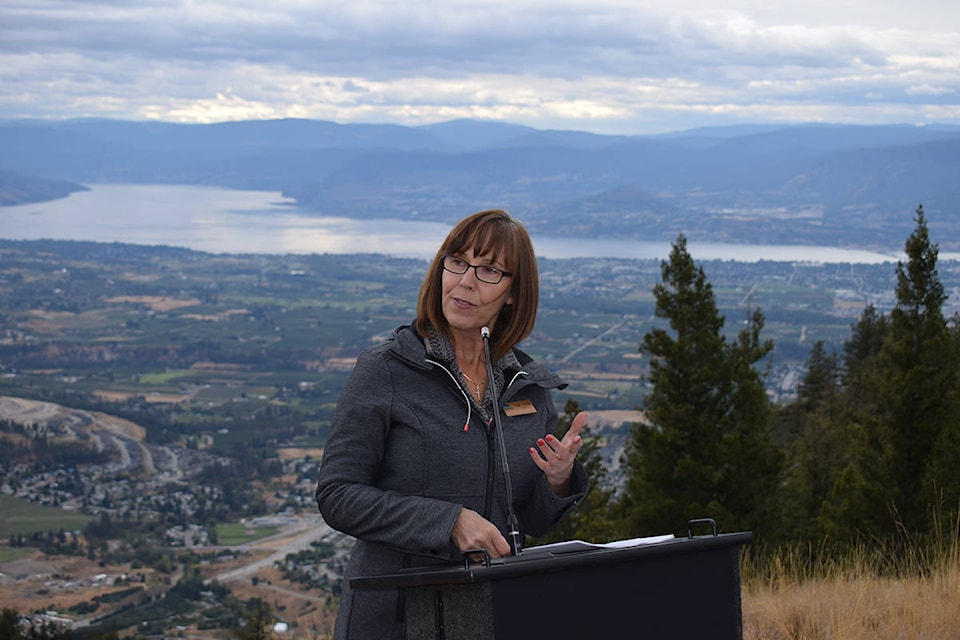The Central Okanagan’s largest regional park just got bigger.
The Central Okanagan Regional District has bought 127 hectares of land to be added to the existing 516 hectares of geographically, ecologically and culturally significant lands that make up Black Mountain/sntsk’il’nten Regional Park. The park towers over Kelowna’s eastern boundary.
The new property was bought for just over $2.3 million, using $2.1 million from two regional parks reserve funds, $200,000 from the federal Habitat Stewardship program and $15,000 from the Central Okanagan Land Trust.
“We’ve now protected more than 640 hectares of significant grassland, open Ponderosa pine and grassland savanna,” said RDCO chairwoman Gail Given Thursday afternoon, speaking at the announcement atop Black Mountain, with the stunning view over Kelowna as a backdrop.
In addition to the fauna, the park is also home to at least nine endangered or threatened species and ecological communities.
Noting 2017 marks the 50th anniversary of the regional district, Given said regional parks have been important to past boards and the current RDCO board and the park’s system has come a long way since the purchase of four hectares in 1975. That would become the first regional park in the area, Kaloya Regional Park in what is now the District of Lake Country.
The lands that makes up Black Mountain/sntsk’il’nten are also culturally significant to the Okanagan syilx people and Given noted the regional district co-manages the park with the Westbank First Nation.
WFN cultural and operations administrator Jordan Cobble was on hand Thursday to explain the cultural and heritage significance of the lands to area Indigenous people, noting the sylix/Okanagan name sntsk’il’nten translates to “the place where arrowheads/flint rock are found.” The land is also an area where food and medicinal plants were found and a lookout location for the entire area now known as the Central Okanagan.
During Thursday’s announcement, a special Canada 150 plaque was presented to recognize the donation of land by the Adria and Holterhus families three years ago that helped create the park under the Government of Canada’s Ecological Gifts Program.
The park is one of 150 significant areas of land recognized by the federal government this year as part of the country’s 150th birthday celebrations.
It was created in 2014 with $7 million in funding from the RDCO’s Regional Park Legacy and Park Land Reserve funds, a $2.3 million donation through the federal Ecological Gifts Program and a co-tenure/management agreement between the RDCO and the WFN for a licence of occupation for 123.6 hectares of Crown land.
The regional district now has 30 regional parks in the Central Okanagan, protecting more than 2,200 hectares of land.
